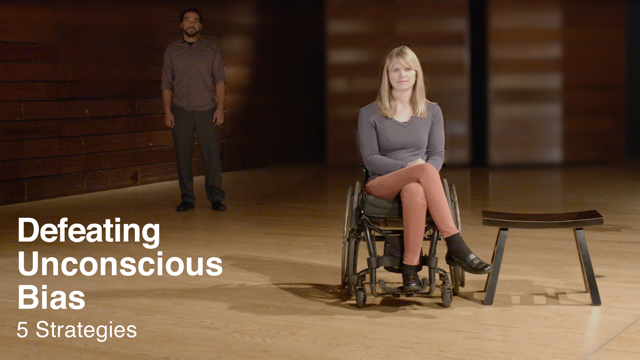THE GREATEST OBSTACLES TO DEFEATING UNCONSCIOUS BIAS

by Sondra Thiederman, Ph.D.
A few weeks ago, I surveyed my contacts around the question: What do you see as the biggest single obstacle to defeating unconscious bias?
About 100 of you responded and here are the results:
- 49.3% said that the biggest obstacle is reluctance to admit we have a bias.
- 4.8% felt that the biggest obstacle is the fact that the bias is unconscious.
- 45.7% of responders felt that the biggest obstacle to defeating unconscious bias is not knowing what steps to take to make it happen.
I can’t say whether or not I found these responses surprising, but I do know I found them gratifying. Gratifying because they point us directly to the solutions we so badly need.
Not Wanting to Admit We Have a Bias – 49.3%:
I like the way the hosts of the training video Defeating Unconscious Bias: 5 Strategies put it when referring to “Jeff” — one of the characters depicted in the script: “Biases don’t make Jeff a bad person. Everyone has biases. They don’t mean we are bad, but they do cause problems and damage relationships.”
This simple principle – the importance of reassuring people that having a bias isn’t a character flaw – highlights one of the major errors we have historically made when attempting to defeat bias. Why would anyone want to acknowledge a bias – much less do anything about it – if they felt that to do so would be admitting to something bad about themselves? What matters is less whether a person has a bias and more whether they are willing to take responsibility for fixing it.
Difficulty Defeating Biases Because They are Unconcious — 4.8%:
I was pleased to see that such a small number of respondents felt that the reason we can’t fix biases is because they are unconscious. In fact – with all due respect to the 4.8% — there are two reasons why most biases – even the unconscious variety – can be fixed.
First, there are ways to become aware of these unconscious beliefs. We talk about one of them in the video – the power of watching our first assumptions about groups in order to identify bias. There are other techniques as well including various versions of the Implicit Association Test.
Secondly, even if we are not aware of our bias – even if it is unconscious – it is still possible to weaken it by exposing ourselves to counter-bias images and experiences. This is only logical when we remember how we acquired the bias in the first place. No doubt it was spawned by an external message of bias that seeped into our unconscious mind. The same “seeping” process is at play when we repeatedly expose ourselves to stimuli that are inconsistent with a biased attitude. With enough exposures, the bias is very apt to begin to fade.
Not Knowing What Steps to Take – 45.7%:
This response tells me that more people realize biases are fixable than I had previously thought. It also says that we need more tools – more steps – for getting the job done. I really believe that the Defeating Unconscious Bias is a solid source of those tools.
One of those bias-defeating tools is our conscious minds. Research has shown that the conscious mind and the decisions it makes has the power to influence what our unconscious believes. In the video, we talk about several ways to go about this. One of the most intriguing has been explored by Susan Fiske of Princeton University. Dr. Fiske and others have shown that biases can be reduced by making the conscious decision to regularly engage in counter-bias behaviors. In other words, act as if the bias does not exist and the bias itself begins to fade. Fascinating isn’t it? Take a look at this blog post or preview the video and you’ll get a better idea of what I mean.
I think you’ll be intrigued by what you see.
(copyright 2016 Sondra Thiederman/Cross-Cultural Communications)

